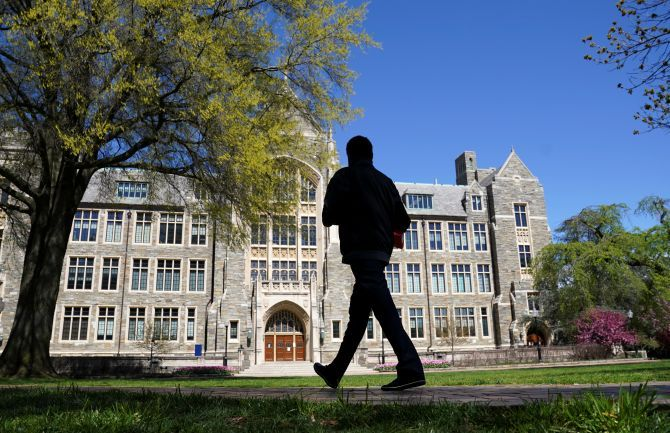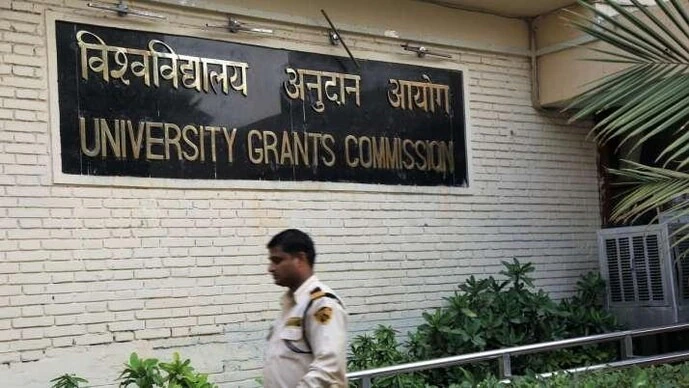Five Foreign Universities to Set Up Campuses in India:
Five renowned foreign universities are establishing campuses in India, marking a significant step in globalizing the country’s higher education.

The University of Liverpool (UK), Victoria University (Australia), Western Sydney University (Australia), Istituto Europeo di Design (Italy), and Illinois Institute of Technology (USA) are set to bring their expertise to Indian students.
This development, driven by recent policy changes, aims to enhance access to world-class education without leaving the country. Here’s a detailed look at what this means for India’s education landscape.
A Landmark Policy Shift
India’s higher education sector is undergoing a transformation, The National Education Policy (NEP) 2020. The policy encourages foreign universities to set up campuses in India to boost academic quality and global exposure.
The University Grants Commission (UGC) finalized regulations in 2023, allowing foreign institutions to establish independent campuses or partner with Indian universities. This move aims to reduce the brain drain of Indian students studying abroad, which costs the country billions annually.
Over 1.3 million Indian students studied overseas in 2024, with significant numbers in the UK, Australia, and the USA. By bringing these universities to India, the government hopes to retain talent and revenue while fostering international academic standards.

The decision aligns with India’s ambition to become a global education hub. The five universities are among the first to take advantage of these relaxed rules. Their entry signals confidence in India’s growing education market, projected to reach $225 billion by 2025. The campuses will offer degrees equivalent to those at their home institutions, ensuring global recognition. This development also strengthens bilateral ties with countries like the UK, Australia, Italy, and the USA, fostering academic and cultural exchange.
The Universities and Their Plans
The University of Liverpool, a prestigious UK institution, plans to offer programs in business, engineering, and health sciences. Victoria University and Western Sydney University, both from Australia, will focus on technology, business, and vocational courses.
The Istituto Europeo di Design (IED), known for its creative programs, will bring fashion, design, and visual arts to India. The Illinois Institute of Technology (IIT), a leader in STEM education, will emphasize engineering and technology-driven courses.
Western Sydney University will establish its campus in Greater Noida, Uttar Pradesh, while IIT plans to set up in Mumbai. Specific locations for Liverpool, Victoria, and IED are yet to be confirmed, but sources suggest they are eyeing major cities like Delhi, Bengaluru, and Hyderabad. These campuses will operate as independent entities, not as branches of Indian institutions, allowing them to maintain their global standards. The universities are expected to start operations by 2026, with some planning to admit students as early as the 2025 academic year.
What This Means for Indian Students
The arrival of these universities offers Indian students access to world-class education without the high costs of studying abroad. Degrees from these institutions will carry the same weight as those earned at their home campuses, enhancing employability in global markets. Students will benefit from international curricula, modern teaching methods, and exposure to global faculty. This is particularly significant for fields like design and technology, where India’s domestic offerings are still developing.
The move also addresses the issue of limited seats in top Indian institutions like IITs and IIMs, where competition is fierce. With only 1% of applicants securing spots in these elite schools, foreign campuses provide an alternative for quality education. Additionally, students will save on expenses like international travel, visas, and high living costs abroad. The presence of these universities could also spur competition, pushing Indian institutions to improve their standards.
Fee Structure: Affordable or Elite?
Fees at these foreign campuses are a key concern. While exact figures are not yet public, estimates suggest they will be lower than international tuition but higher than most Indian private universities. For example, a degree at the University of Liverpool’s UK campus costs around ₹25-30 lakh per year. In India, fees could range between ₹10-20 lakh annually, depending on the program. Similarly, Australian universities like Victoria and Western Sydney, which charge ₹20-25 lakh abroad, may offer courses at ₹8-15 lakh in India. IED’s design programs, which cost ₹20 lakh in Italy, might be priced at ₹7-12 lakh. IIT’s STEM courses could follow a similar pattern.
These estimates account for lower operational costs in India, such as faculty salaries and infrastructure. However, the universities may charge premium fees to maintain their brand value and global standards. Scholarships and financial aid are expected to be available, especially for meritorious students from economically weaker sections. The universities are also likely to offer payment plans to make education more accessible.
Regulatory Framework
The UGC will regulate these foreign campuses under its 2023 guidelines. These rules ensure that foreign universities maintain the same academic standards as their home institutions. The campuses must operate as not-for-profit entities, reinvesting all revenue into education. The UGC will monitor curriculum quality, faculty qualifications, and infrastructure to ensure compliance. Degrees awarded will be recognized as equivalent to those from the parent university, with no requirement for additional UGC approval.
However, the universities will have autonomy in setting curricula, hiring faculty, and determining fees. This flexibility allows them to tailor programs to Indian needs while maintaining global standards. The Ministry of Education will facilitate approvals, ensuring smooth operations. Concerns remain about oversight, as some experts worry about potential commercialization. The UGC has promised strict monitoring to prevent foreign universities from becoming “degree mills.”
Admission Process: How to Get In
Admissions will follow the universities’ global standards, adapted to the Indian context. The University of Liverpool, Victoria, and Western Sydney are likely to use a combination of academic records, entrance tests, and interviews.
Standardized tests like SAT, ACT, or IELTS may be required, though some universities might develop India-specific entrance exams. IED, focusing on creative disciplines, will likely prioritize portfolios and design aptitude tests. IIT may require exams like JEE-equivalent tests or its own STEM-focused assessment.
Applications will be online, with clear guidelines on the universities’ websites. Deadlines are expected to align with global academic calendars, likely starting in mid-2025 for the 2026 session. Indian students will compete for seats alongside international applicants, fostering a diverse student body. Reservation policies, common in Indian institutions, will not apply, as these campuses operate under foreign regulations. However, universities may offer merit-based scholarships to ensure inclusivity.
Challenges and Opportunities Ahead
While the development is promising, challenges remain. High fees could limit access to affluent students, creating an elite education tier. Infrastructure development, especially in smaller cities like Greater Noida, may face delays due to bureaucratic hurdles. Faculty recruitment is another concern, as attracting global talent to India could be costly. Additionally, cultural differences in teaching styles may require adjustment for Indian students used to rote learning.
On the flip side, the opportunities are immense. These campuses will create jobs, boost local economies, and foster research collaborations. They will also attract international students, positioning India as a global education destination. The presence of foreign universities could drive innovation in fields like AI, design, and healthcare, aligning with India’s economic goals. For students, the chance to earn a globally recognized degree at home is a game-changer.
The entry of five foreign universities into India marks a bold step toward globalizing higher education. By offering quality education at potentially lower costs, these campuses could transform opportunities for Indian students.


 How Did India Find Oil in Andaman Sea?
How Did India Find Oil in Andaman Sea?  Water Crisis in Pakistan 4 Urgent Letters to India
Water Crisis in Pakistan 4 Urgent Letters to India  Rapper Badshah Faces Backlash Over Dua Lipa Comment
Rapper Badshah Faces Backlash Over Dua Lipa Comment  Virat Kohli ‘Shocked’ After 11 Die in RCB Victory Celebration
Virat Kohli ‘Shocked’ After 11 Die in RCB Victory Celebration  IAS Officer Abhishek Singh Who Quits Job to became Actor
IAS Officer Abhishek Singh Who Quits Job to became Actor  Modi Declares Operation Sindoor Ongoing
Modi Declares Operation Sindoor Ongoing